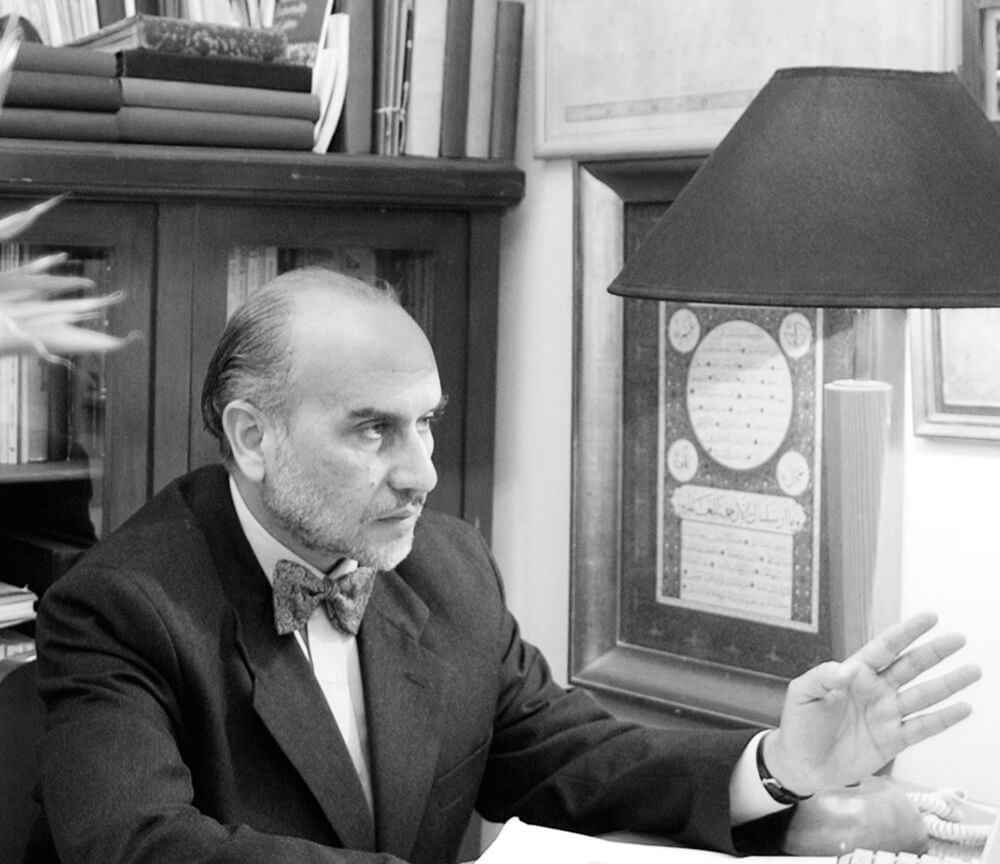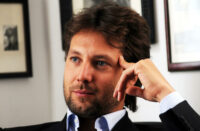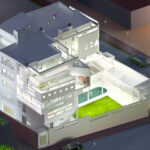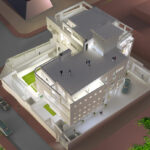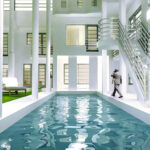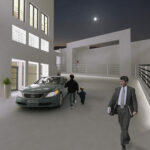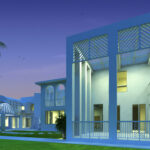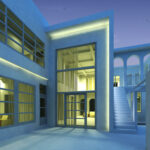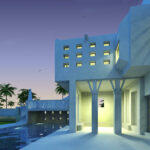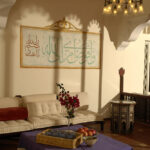ArchiTravel interviews the architect and professor Ahmad Hamid.
Interview by : Maria Anagnostou
Maria Anagnostou: What is the importance of architectural tourism?
Ahmad Hamid: Architectural tourism serves the layman and the professional to get acquainted at least to the major architectural sites and happenings in a city where he is keen to be for a lapse of time. This intensification of exposure to the right buildings, exhibitions and archi-events is a must more so if our time in the city is limited. It may allow for human contacts and encounters as well. A sort of networking that is beyond geographical borders can be generated.
M.A.: What is the importance of traveling, especially for architects and humans in general?
A.H.: Traveling is a pleasure and a must, to round out and shape our world view amidst many more benefits. For architects more so to assimilate more ideas and forms and concepts that remain hidden no matter how many books do cover the pictures and subject matters involved, seeing is not only believing, it is assimilating and stimulating.
M.A.: What is the role of architecture as a destination and the added value that it creates within a city?
A.H.: Architecture as a destination brings an ‘entire culture’ into a vivid visual presence for the onlooker tourist, it speaks then to how spaces were laid and layered, how masses were constructed, historically, who built what and for what cause, the builders were who exactly, the know how is an expression of, the society then did believe as such, an entire life style can be regenerated into our imagination. This regeneration is healthy and important for the sanity of the contemporary individual, for he is and never was alone. Past lessons can be of benefit continuously.
The city becomes alive with high lighting such beacons or monuments of architecture , it takes more of a meaning and becomes more friendly then simply being a foreign city. New networks of civic interaction are hence discovered, and history takes a second chance at being alive.
M.A.: What is the importance of architectural events (like WAF) worldwide? What are the profits for a city holding such kind of major events?
A.H.: WAF is important because it networks human genius in the field of architecture and planning, beyond any boundaries. It becomes a melting point where all architects , designers and planners do belong to the same country for a couple of days at least, this solidarity is important.
Accordingly, the city that hosts the event becomes center of attraction, for news makers and academies worldwide. The city then grafts onto its administrative and economic cultural bodies this sense of pride to host such a pluralistic cultural event. Its sites have to be explored, exhibiting to the world of architecture its genius logic. This in turn may stimulate further tourism and exchange of material goods and intellectual ones too.
M.A.: You have created the architectural office “Ahmad Hamid Architects”, a Cairo-based private interdisciplinary design office providing architectural services for residential and commercial projects, public spaces, as well as product and furniture design.
Egypt is a country with great history. Designing a modern building within this context is a complex procedure. Is critical regionalism an approach to your architecture?
A.H.: Critical modernity I would say is my approach, you have to read my new book just launched; “Hassan Fathy and Continuity in Islamic art and architecture: The Birth of a New Modern”, there is a redefinition of Modernity per se and historical traditions, the practise in Egypt and the Islamic world would then be super modern, something I pimply in my projects without falling into the cliche of what is modern in the prevailing culture, it can be a frozen idea that is passé with no more meaning today. I enjoy always being the son of the moment. So my projects are very diversified in their solvable formulas.
M.A.: How would you characterize modern Islamic architecture, if this term exists?
A.H.: Modern Islamic architecture in my practise would be encompassing both “the art of living and the science of well being’, these are my terms to define generally a new paradigm for the “good life”. This formula is not exclusive to a people than another, with respects to the evident presence of globalization, it would be in universal service to both, man and habitat.
M.A.: You have dealt with urban and rural projects alike, focusing on the development of context appropriate, economically sustainable solutions. In recent years attention turns to green urban regeneration. Do you think that it is imperative for the city or is it just a new fashion with economic outcomes and covertly interests?
A.H.: Green approaches to living and more so to the urban quality of life, drives planning and architecture out of an urgent sense of necessity, away from fashion and prevailing trends, it might even be the cause to reverse the fashion and trend as we are beginning to witness now suddenly in the fashion and design production circles.
M.A.: You say that your 30 years of architectural practice have been driven by the inextricable relationship between art and architecture, as well as the conviction that the positive influence of art and design extends beyond function, encapsulating an entire mode de vie. How have these ideas influenced your work?
A.H.: If art and design communicate to “the sublime”, then they do have a positive effect on our being, they can even be therapeutic. This role of design’s positive effect is in no way similar to the Victorian moralistic approach of the art and craft movement in England and elsewhere. This is why I have worded “the sublime” in relation to the focus of this alloy “art & design”, human life is very multilayered, made of issues that are complex to say the least, hence the subtle stimulating role of architecture that is based on this alloy. No direct cause and effect results are to be expected, but a long term transformation allowing for the seeds that are germinating through the designs and architecture thus built, to bear fruit eventually. Humans need tenderness, affection and care, if this is translated through the design disciplines, it is inevitable that society at large can be heart fully touched, accordingly change can be gestated. Even the remote in place or time in men or women can come to unison.
My practice, that is based on the “artisanal design studio”, has always indicated for me that harmony results from bringing the latest in science artfully to the assimilative capacity of man, this is nothing but the field of good design, no acrobatics nor somersaults nor shocks of exhibitionism, art and design can be sober, friendly, innovative and more, so even pleasurably memorable.
M.A.: At the end, can you please provide your personal proposal for 10 buildings which you think as the most important worldwide that someone must visit anyway?
- Sultan Hassan Mosque, Cairo
- Grand Bazaar, Istanbul
- Selimeyah Complex, Edirna
- Al Suheimy House, Cairo
- Al Hambra Palace and Gardens, Granada
- Villa Savoy by Le Corbusier, Poissy, France
- Museum of Modern Art, Barcelona
- Piazza St. Marco, Venice.
- Piazza del Signoria Florence.
- Grande Central Station, New York.
- Barcelona Pavilion by Mies Van der Rohe
Featured Image © Mr. Mohamad Aboul Einein
More on : Ahmad Hamid
About this Author : Maria Anagnostou
Work of Ahmad Hamid

